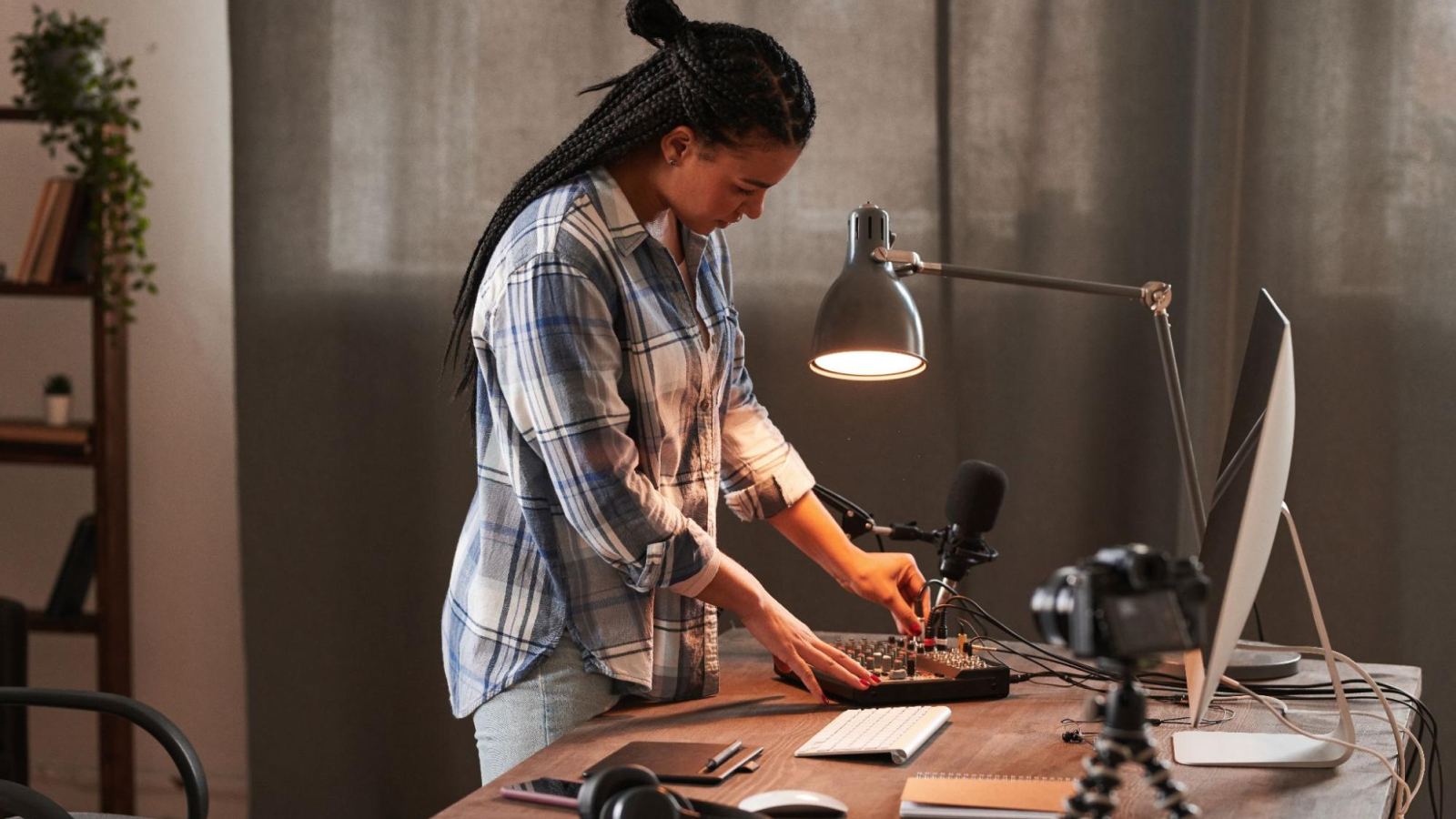In this article, we'll explore what a hybrid working strategy is, what it consists of, and how a successful hybrid workplace strategy can benefit your workforce ⬇️
Takeaways
- Enhancing Comfort and Productivity: The ability to choose when and where to work increases employee satisfaction and efficiency.
- Need for Preliminary Assessment: It's crucial to determine the compatibility of the hybrid format with your business, considering employee preferences and legal aspects.
- Careful Strategy Development: Successful implementation requires a clear strategy, including goal setting, policy development, and office space adaptation.
- Investment Payback: While initial costs are significant, long-term savings and intangible benefits outweigh the expenses.
- Successful Examples Confirm Effectiveness: Companies like Microsoft, Siemens, and Atlassian showcase the success of the hybrid model in achieving business goals and fostering company culture.
What Is a Hybrid Workplace Strategy
What is a hybrid workplace strategy? By definition, it’s an approach to work organization that combines both remote and in-office elements. This model gives employees the flexibility to work from a designated office space or any other convenient location — whether that’s home, a coworking center, or a nearby café, combining in-person or virtual collaboration effectively.
Benefits of a Hybrid Work Strategy
The combination of online + offline allowed the benefits of remote work and in-office collaboration to be realized:
- Increased flexibility: Employees appreciated the flexible schedule, no commute time savings and better work-life balance.
- More productivity: Companies noticed that productivity did not decrease and sometimes even increased with hybrid work.
- Talent retention and attraction: Flexible working conditions have become a competitive advantage in the labor market.
- Better health and safety: The hybrid format reduces the number of people in the office, lowering the risk of getting sick.
- Lower office costs: Reduced office rent, utilities, office cleanliness and equipment upgrades.
How to Determine if the Hybrid Format Suits Your Company
Before developing a hybrid work mode strategy, you need to assess whether it will truly benefit your company.
Analyze Your Business Specifics: The hybrid format is most effective for office and creative professions such as information technology, marketing, finance, education and consulting, where the main work involves information processing and can be performed remotely.
Medical professionals, construction hybrid workers and drivers are not suited to the hybrid format — here it is important for employees to be always on the job, quickly coordinate actions and comply with safety standards.
Gauge Employee Opinions: Conduct a survey to assess the company’s capabilities and employee preferences before transitioning to a hybrid format.
- Which hybrid format suits them better: standard — work a few days a week from the office and the rest from home, or weekly — for example, work 3 weeks from home and 1 week from the office.
- How many days to work from the office and how many from home. Some will be ready to fully transition to working from home, while others will want to commute 5 days to the office as they always have, though many hybrid employees prefer a balanced schedule.
- Convenient days to work: ask employees to choose which days of the week are most convenient for them to come to the office. For example, only Tuesday or Thursday.
Calculate Potential Costs and Benefits: Develop a business plan to determine how much the transition to a hybrid model will cost and what benefits it will bring. It will be imperative to invest in technology infrastructure and equipment, reconfiguration and office space management system, staff training, development of new HR policies and procedures, and support for remote employees.
Consider Legal Aspects: Familiarize yourself with remote work laws in your country or region. You may need to update contracts or add additional agreements. If you don't have an in-house legal department, we advise you to hire outside counsel for this task.
🇩🇪 In Germany, employers are obliged to ensure the safety and health of employees even when they work from home. The Occupational Safety and Health Act (Arbeitsschutzgesetz) requires risk assessments of the home workplace.
How to Develop a Hybrid Workplace Strategy: Best Practice
1. Define Performance Metrics
Start by clearly setting the goals you aim to achieve by adopting a hybrid work format. This helps identify necessary changes and how to assess their success.
- Set Objectives: Decide what's important for your company — increasing productivity, improving employee satisfaction, attracting new talent, or reducing costs.
- Establish KPIs: These could be measures of productivity, employee engagement, satisfaction levels, cost savings in office space or reduced turnover.
- Plan Regular Monitoring: Determine how often you'll evaluate KPIs to make timely adjustments.
2. Develop Remote and Hybrid Work Policies
Create clear rules and guidelines that will govern work in the new format.
- Define Who Can Work Remotely: Not all positions may be suitable for remote work. Outline criteria and exceptions.
- Establish Communication Rules: Specify which communication channels to use for various types of interactions — email, messaging apps, video calls.
- Set Work Schedules: Decide how many days a week employees work in the office versus at home. This could be a fixed schedule or a flexible arrangement upon agreement.
You can empower employees to manage their schedules with an office management system. It's a handy scheduling tool that you can use even with your smartphone. The entire company has access to the schedule, so every employee can see when the colleagues they need will be in the office and can adjust their schedule in a few clicks.

3. Amend Employment Contracts
Ensure that current employment contracts align with the new work conditions.
- Specify Work Location: Add the possibility of remote or hybrid work.
- Update Work Schedules: Reflect any changes in working hours if applicable.
It's crucial that all changes are legally sound and comply with labor laws. Consulting with a lawyer or HR specialist is recommended.
4. Provide Necessary Tools to Employees
Employees need certain resources to work effectively from home.
- Technical Equipment: Laptops, headsets, webcams. Decide whether the company will provide the equipment itself, reimburse the costs, or whether the employee will have to buy everything himself.
- Software: Access to corporate systems, video conferencing tools (Zoom, Microsoft Teams), messaging apps (Slack, Cisco Webex Teams, Mattermost), project management software (Trello, Asana, Jira).
Ensure that employees understand how to use collaboration tools effectively, and explain how their efficiency will be evaluated while working remotely using these digital tools.

5. Adapt Office Space: key points of Effective Hybrid Workplace
Reorganize the office to suit the hybrid work mode.
- Optimize Workstations: Reduce the number of permanent desks if employees work from home. Instead, create flexible work areas with desks that employees can book like a co-working space.
- Implement Booking System: Give employees access to a hybrid office management system where they can not only plan their schedules, but also book work/parking spaces and meeting rooms on days they work from the office.

The UnSpot system allows employees to book their own workstations, meeting rooms, parking spaces, and lockers. An interactive map helps quickly locate a workstation or meeting room with the equipment you need, such as an additional monitor or a projector.
6. Test the Strategy
Before fully implementing your hybrid policy, run a three-month pilot project to test its effectiveness. This step is crucial to crafting a successful hybrid workplace and should not be overlooked.
- Choose 1-2 departments within the company to serve as test groups. These teams will fully adopt the new hybrid policy and utilize all the tools designed for the updated work format.
- Set Clear Goals and Evaluation Criteria: Determine what you want to test and what results will be considered successful.
- Gather Feedback: Regularly communicate with pilot participants to learn about challenges and successes.
7. Train Employees and Leaders
Provide the necessary training for a successful transition to the hybrid format. Distribute the material prepared during the pilot phase to colleagues and help employees and managers adapt to the new work format.
For Employees:
- Effective remote work: time management, self-organization, maintaining productivity.
- Using new tools: training materials on software and platforms.
For Leaders:
- Managing distributed hybrid teams: supporting motivation, monitoring results, and communication.
- Virtual leadership skills: team building, developing corporate culture in an online environment.

8. Monitor and Evaluate Strategy Effectiveness
Regularly check how the hybrid work format is affecting your company. See if the changes are working as expected.
- Gather data on key indicators. This could include employee productivity, employee engagement, or the company's financial performance.
- Make sure to ask employees for their feedback on the new system. For example, conduct surveys to find out if they are satisfied, what challenges they face, and what could be improved.
9. Support remote employees
Employees may find it difficult to transition to a new work format, especially if they have no prior experience working remotely.
- Technical Support: Provide prompt remote assistance to resolve issues with equipment or software.
- Feedback Channels: Regularly hold one-on-one meetings with managers to discuss any emerging issues and gather feedback.
- Training and competence development: Organize online meetings with invited experts or ask more experienced colleagues to share their experience.

How Quickly Different Age Groups Adapt to Hybrid Work
Based on research and statistical data from the UnSpot analytics system, we have prepared an analysis of how various age groups adapt to the hybrid work format. This way, you will know in advance how to find an approach to each employee, and eliminate complications.

So, here's how long it takes for different age groups to adapt to hybrid work:
- Age Group 20-29 Years: 3 month
- Age Group 30-39 Years: 5−7.5 month
- Age Group 50-59 Years: 17.5 month
- Age Group 40-49 Years: 9 month
Examples of Successful Hybrid Work Implementation in Companies
Case #1: Microsoft
Microsoft was one of the first major tech companies to implement a policy for a hybrid work model. Most employees can work remotely up to 50% of the time. According to Microsoft, their approach includes not just flexibility in work locations but also active development of video conferencing software and other remote collaboration tools."
Case #2: Siemens
According to HRmasia, “Siemens‘ ’new normal' work model has established mobile working as a core component of the organization's culture, indicating a notable organizational shift. This model allows employees to choose where, when and how they work, with an average of two to three days per week spent remotely”.
Case #3: Atlassian
Australian company Atlassian, known for its software development tools, embraced the Team Anywhere strategy. Employees are allowed to work from anywhere in the world where the company has a legal presence. This enabled them to attract global talent and maintain effective collaboration in distributed teams.
FAQ about Hybrid Workplace Strategy
What is a hybrid workplace strategy?
What are the 4 pillars of hybrid working?
- Flexibility: Employees choose their work location and schedule.
- Technology: Tools for seamless collaboration, such as video conferencing and project management software.
- Workplace Culture: A supportive culture that values communication and inclusion.
- Clear Flexible Work Policies: Guidelines on schedules, in-office requirements, and remote work expectations.
How to develop a hybrid workplace strategy?
- Assess Suitability: Analyze your industry and employees' preferences.
- Set Objectives: Define goals like increasing productivity or reducing costs.
- Draft Policies: Establish rules for communication, schedules, and office use.
- Provide Tools: Equip employees with software and equipment for remote work.
- Test and Train: Run a pilot program and train staff on new processes.
What is a hybrid workplace structure?
A hybrid workplace structure is a work setup where employees split their time between working in the office and working remotely (like from home).
- Combination of Office and Remote Work: Employees can work from the office some days and from home or other locations on other days.
- Flexibility: Allows for a better balance between work and personal life.
- Enhanced Productivity: Employees can work in environments where they feel most comfortable and focused.







